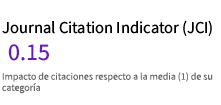The Counts of Aguiar’s Legacy to the Fine Arts Museum of Seville
DOI:
https://doi.org/10.24310/ba.46.2024.19114Keywords:
Conde de Aguiar, Andrés Parladé, Museum of Arts and Popular Traditions of Seville, Fine Arts Museum of Seville, Archaeological Museum of Seville, Royal Academy of Fine Arts of Saint Elisabeth of Hungary in SevilleAbstract
The marriage of Candelaria de Alvear and the painter Andrés Parladé (Count of Aguiar) amassed an extensive and eclectic collection of artworks in their home located in Puerta de Jerez, Seville. After the death of the Count of Aguiar, Candelaria de Alvear took charge of managing the artistic legacy, donating a significant portion to the Royal Academy of Fine Arts of Seville to create a monographic room, which was installed in the Museum of Fine Arts of Seville. In this work, we provide numerous unpublished pieces of information, highlighting the inventory of the legacy and the fate of those works after the room was dismantled, which can now be found in the Museum of Fine Arts of Seville, the Museum of Arts and popular traditions of Seville, or the Archaeological Museum of Seville.
Downloads
Metrics
References
CABEZAS GARCÍA, Álvaro (2016), «Una obra inédita de Andrés Parladé, Conde de Aguiar», Laboratorio de Arte, n.º 28, pp. 511-518.
CANO RIVERO, Ignacio (2008), «Aguiar. Apuntes de su vida y de su obra», en Aguiar. Otro costumbrismo (catálogo de exposición), Junta de Andalucía, Consejería de Cultura, Sevilla, pp. 13-32.
BELTRÁN FORTES, José (2000), «Leones de piedra romanos de Las Cabezas de San Juan (Sevilla). A propósito de un nuevo ejemplar identificado», SPAL, n.º 9, pp. 435-450.
BESA GUTIÉRREZ, Rafael de (2018), El Museo de Bellas Artes de Sevilla en el siglo XIX, Diputación de Sevilla, Sevilla.
BESA GUTIÉRREZ, Rafael de (2024), «La casa de Jerónimo Pinelo: Presencia lombarda en la Sevilla del Renacimiento», en Materiales, técnicas, estrategias y resultados. Planteamientos humanos ante los retos socio-culturales, Dykinson S.L., Madrid, pp. 706-724.
HERNÁNDEZ DÍAZ, José (1967), Museo Provincial de Bellas Artes de Sevilla, Ministerio de Educación y Ciencia, Dirección General de Bellas Artes, Madrid.
MORENO MENDOZA, Arsenio, PAREJA LÓPEZ, Enrique, SANZ SERRANO, María Jesús y VALDIVIESO GONZÁLEZ, Enrique (1991), Museo de Bellas Artes de Sevilla, Ediciones Gever, Sevilla.
NAVARRO ORTEGA, Ana, SAN MARTÍN MONTILLA, Concepción y CAMACHO MORENO, Manuel (2017), «Museo Arqueológico de Sevilla (1879-2017): 138 años de historia y algunos más», Boletín del Museo Arqueológico Nacional, n.º 35 (extra), pp. 439-458.
RAMÍREZ PONFERRADA, M.ª Dolores (2023), «¿Educación o instrucción en las elites de la España contemporánea? Un ejemplo andaluz: Las Alvear», Anuario Jurídico y Económico Escurialense, n.º LVI, pp. 299-334.
RODRÍGUEZ AGUILAR, Inmaculada Concepción (2000), Arte y Cultura en la Prensa. La pintura sevillana (1900-1936), Universidad de Sevilla, Sevilla.
SÁNCHEZ PINEDA, Cayetano (1935), «Memorias reglamentarias presentadas a la Junta de Patronato, por D. Cayetano Sánchez y Pineda, director del Museo Provincial de Bellas Artes. 1933-1934», Boletín de Bellas Artes, 1.ª Época, n.º 2, pp. 58-63.
TOSCANO SAN GIL, Margarita y CORZO SÁNCHEZ, Ramón (2006), La Real Academia de Bellas Artes de Santa Isabel de Hungría de Sevilla: Su historia, su organización y su estado en el año 2006, Real Academia de Bellas Artes de Santa Isabel de Hungría, Sevilla.
VALDIVIESO GONZÁLEZ, Enrique (1986), Historia de la Pintura Sevillana, Ediciones Guadalquivir, Sevilla.
Downloads
Published
How to Cite
Issue
Section
License
Copyright (c) 2024 Rafael de Besa Gutiérrez

This work is licensed under a Creative Commons Attribution-NonCommercial-ShareAlike 4.0 International License.
Todos los contenidos publicados en la revista Boletín de Arte están sujetos a la licencia Creative Commons Reconocimento-NoComercia-Compartirigual 4.0 cuyo texto completo puede consultar en <http://creativecommons.org/licenses/by-nc-sa/4.0>

Los/as autores/as cuyas contribuciones sean aceptadas para su publicación en esta revista conservarán el derecho no exclusivo de utilizar sus contribuciones con fines académicos, de investigación y educativos, incluyendo el auto-archivo o depósito en repositorios de acceso abierto de cualquier tipo.
La edición electrónica de esta revista esta editada por la Editorial de la Universidad de Málaga (UmaEditorial), siendo necesario citar la procedencia en cualquier reproducción parcial o total.











4.png)
